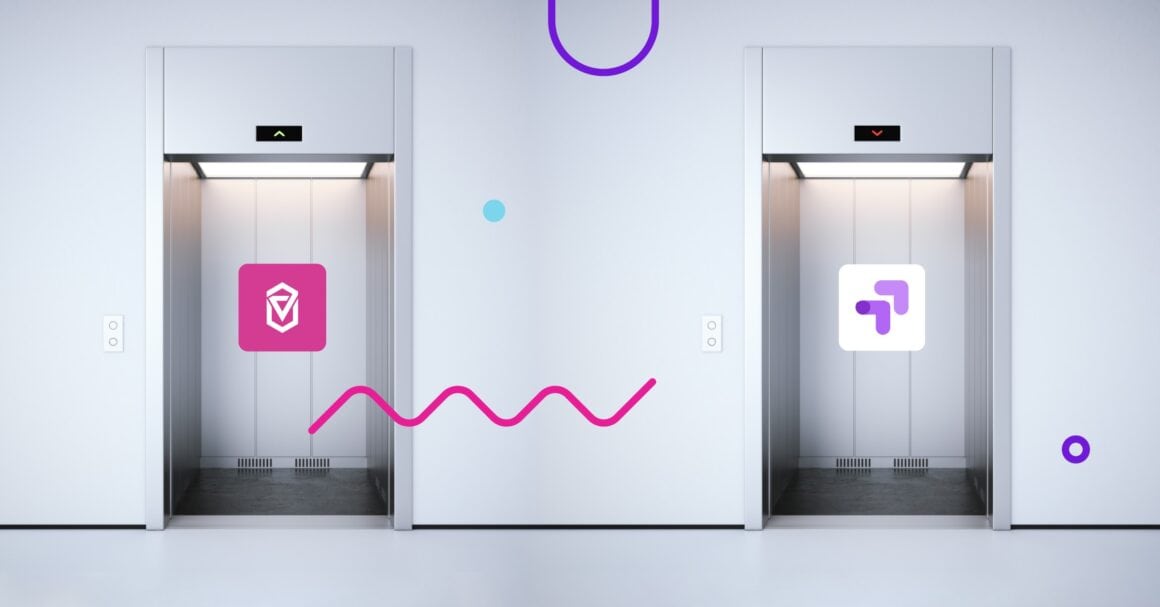Voluum as an alternative for Google Optimize may bring a more performance-oriented approach to your marketing stack. Use Voluum to achieve your campaign goals and quickly find the best version of your page that brings you the most results.
What is Google Optimize?
Google Optimize is an A/B testing and optimization tool that allows users to perform easy tests to see if even minor changes on a website are getting traction.
But recently Google announced that it is axing this tool. Google Optimize will soon join a now-sizeable group of other services in the Google Cemetery from September 2023, leaving its users in search of a Google Optimize alternative.
Voluum tracker has been built with A/B testing in mind. Its testing mechanism differs from what Google offers, yet Voluum can be a great replacement for Google Optimize, in some cases even surpassing the original.
Let’s look into how Voluum can fill the void that Google Optimize left.
Who are both platforms for?
Google Optimize is best suited for website owners or ecommerce store owners that most likely don’t rely on paid traffic. It is a partly analytical, partly testing tool that hones the browsing experience for site visitors.

Voluum on the other hand is a tool mostly used by paid advertisers. The set of features it brings to the table are aimed at squeezing the most performance out of ad dollars spent.
The distinction between these two worlds isn’t clear as the digital marketing landscape is home to a multitude of overlapping scenarios. Voluum is about versatility, working with separate platforms, adjusting the campaign funnel on the fly, while Google Optimize’s core strength is ease of use and close connection with other Google properties.
How much do both platforms cost?
Nothing in life is free – apart from Google Optimize free tier (if you don’t count paying with your data). The more feature-packed premium tier – Google Optimize 360 – is no longer being licensed separately but is offered as a part of Google Analytics 360. This in turn costs around $50,000 per year.
Huge amount of money when compared to even most expensive Voluum pricing plans.
Each Voluum account comes with a free and unique tracking domain that allows you to safely use redirect tracking (handy if you want to track traffic on websites that you cannot edit, for example – from affiliate networks). It also supports pixel tracking that is compliant with Google or Facebook (although with direct tracking, your A/B testing options are limited: you can test offers after directing visitors to one landing page first).
All pricing plans come with Automizer: an API integration & automation tool that connects with popular ad networks, search engines and social platforms (yes, that includes Google Ads and Facebook). The integrations allow you to automate some parts of your marketing work with rules that use if/then logic.
With higher pricing plans you get access to bot-filtering features or automatic A/B testing based on machine learning.
Is Voluum Here to Stay?
Yes. Voluum is a mature product that has been around for a decade. It has a growing user base and a dedicated team behind it. Voluum is expanding to new markets, accommodating more and more use cases. With a 100% server uptime since 2014, it is a stable solution that can support your business.
Voluum as a Google Optimize Alternative
Both platforms have never been direct competitors. Voluum is much closer to Google Analytics but with important distinctions that we have already covered in a previous blog article.
Still, we believe that many former Google Optimize users will feel much better with Voluum, thanks to its approach oriented on data safety, flexible UI and API integrations.
Below we focus on various Google Optimize features and how they stack up against what Voluum has to offer.
1. Testing

Google Optimize can show different variants of the same page to random or precisely outlined parts of an audience. It allows you to:
- Check which version of the web page performs better on the traffic you get with A/B or multivariate testing.
- Segment your audience and display different versions of the web page depending on traffic criteria.
- Perform personalization tests, when parts of the web page are adjusted toward a certain demographic.
These things allow SMEs to run their businesses more efficiently. It is as easy as it gets: one browser extension and you can modify button placements or creative layouts with a few simple clicks. Google Optimize then uses data from Analytics for measurements.
Voluum was designed specifically for performance marketers. This approach allows users to test many variations of the web page at once, create elaborate rule-based paths, or use AI to distribute traffic between variants of the web page in the most optimal way.
Note that each variant needs to have a separate URL. You can easily duplicate your website and make a change in your web designing tool and put it to the test.
While Google Optimize allows you to fine-tune the experience, Voluum unlocks the option for massive testing. One of our most prominent clients used Voluum to test hundreds of variations of a landing page – something that would be much harder to do with Optimize. Voluum even allows you to test pages without adding them to the funnel – perfect for auto-generated pages or massive numbers of pages.
2. The targeting options
Google Optimize uses deep insights gathered by other Google properties. You can target changes based on demographic or behavioral data.
In Voluum, you can use rule-based paths to also send users to various versions of your page. Voluum uses 30+ data points (that it derives from user agent or client hints), including popular ones such as device type, language or country, and many more.
Paid advertisers appreciate the option to send people to different paths based on which placement (specific place on a publisher’s page where an ad is displayed) was clicked or whether a given visit was unique or returning. Each rule-based path (executed in a customizable order) may contain several landing pages with traffic carefully distributed between them with weights or AI. For example, you can divide your audience based on a device type they use (iPhone or Android) and test variations of landing pages for these two groups separately.
AI optimization is hard to overestimate when you want to achieve highest performance (ROI) but don’t want to be glued to the monitor 24/7.
3. Google properties
Obviously, Google properties are interlinked with each other. Google Analytics feeds data to Data Studio or Optimize via API and tracking scripts are managed with Google Tag Manager.
Voluum can tap into data from Google ads with its API integration to synchronize cost on campaign level and pass conversion data (recorded using any method, either pixel or postback) back to Google.
You can also use Google Tag Manager to handle Voluum tracking scripts.
4. Reporting
Voluum is far more than just an A/B testing tool. It has a powerful reporting engine that allows you to outline precise sets of real-time data to see what works in detail.
Data analysis comes after A/B testing and in Voluum, you can use grouping or drill-down options to draw precise conclusions and make informed decisions.
A/B testing is rarely a binary thing. More likely the answer to which page performs better is more nuanced. One page may work better on Android traffic from big cities.
While most Google Optimize alternatives rely on Google Analytics reporting capabilities, Voluum offers its own approach that was tailored to analyze large quantities of data. With multiple drill-down levels and grouping options you can quickly outline the desired scope of data and see:
- How a given page performs on certain device types on WiFi vs carrier connection.
- What is the performance of the web page in one concrete city in selected time period
- How various pages perform for the same audiences
Voluum is fast-paced and performance-oriented approach to digital marketing
We are not saying that Voluum is a 1 to 1 replacement for Google Optimize – we are saying that Voluum offers a different approach to analyzing & managing your marketing strategy that may work better for plenty of businesses.
If you ever felt that Google Optimize lacks more robust A/B testing options that would facilitate massive testing or you didn’t like to keep your data on Google properties – Voluum is worth checking out.
If you ever needed more from your analytical solution, like bot-filtering options or automatic traffic distribution, Voluum has all that and more.
If you ever wanted to expand beyond the Google ecosystem and leverage paid advertising on popular ad networks and try out alternative ad formats, Voluum has got you covered.
Consider using Voluum by checking out the demo version or, if you are already set on using Voluum, grab it and get started today.
Pros of Voluum as Google Optimize alternative:
- Supports A/B, multivariate or redirect testing
- Build for passive performance testing
- Robust reporting engine
- Automatic traffic distribution
- Integrated with Google Ads
- GDPR-compatible
Cons of Voluum as Google Optimize alternative:
- A/B testing of landing pages works with redirect tracking only
- Not a drag & drop solution, requires each page to use unique URL
- No integration with Google Analytics


 – the reason you need alternatives
– the reason you need alternatives 
